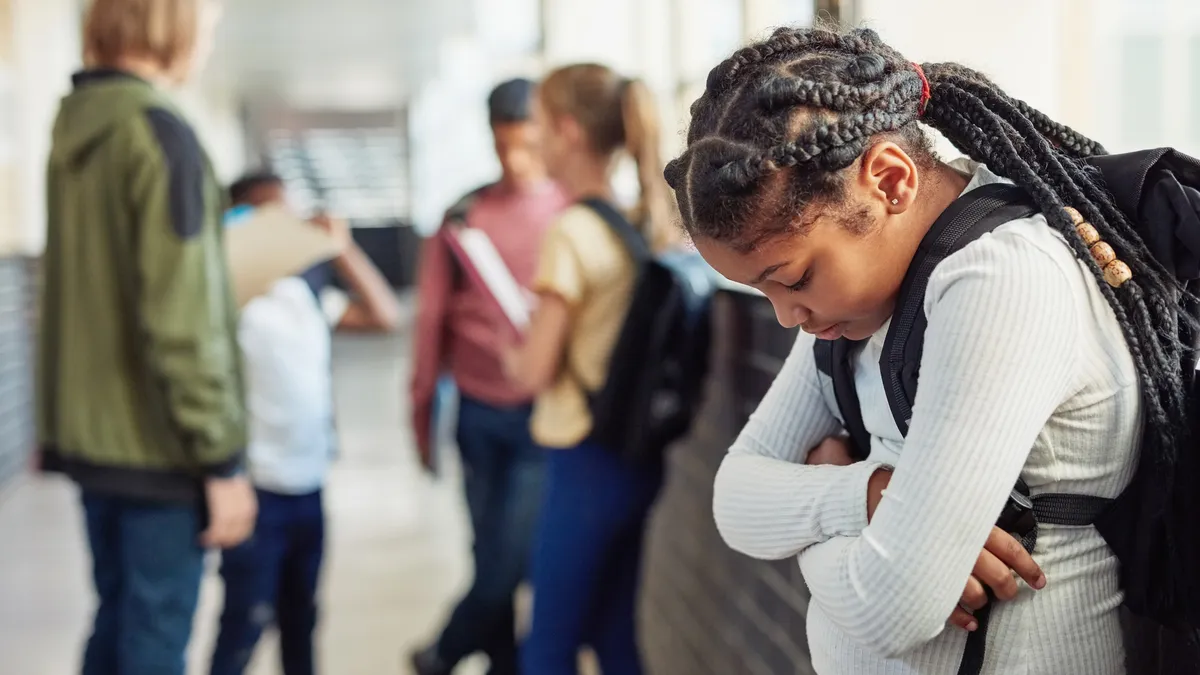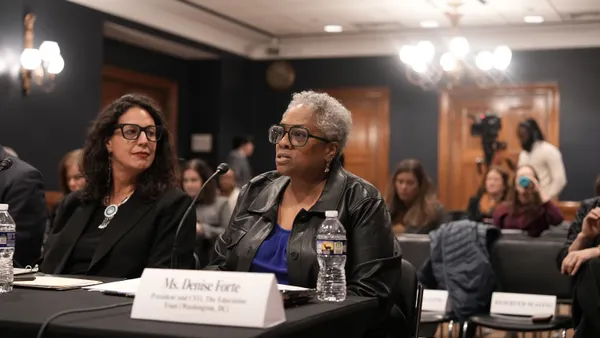Stephanie Parry is director of P-12 strategy at the Newark Trust for Education, a nonprofit dedicated to impoving public education quality in Newark, New Jersey.
Contentious rhetoric from a minority of people has put educators and experts on the defense about the long-established benefits of social-emotional learning. After months of political football on the topic, and with heightened national concern about student well-being and learning loss, it’s time to get back to the discussion about what states, districts and schools should do to ensure students are developing the competencies necessary to promote learning and development.
Recent articles have reiterated the proven benefits of social-emotional skills: They have been shown to improve academic performance by as much as 11 percentile points, and are strongly associated with positive youth outcomes in the areas of education, employment, criminal activity, and mental health.
Debates in the media fail to highlight what’s happening on the ground in schools. SEL programs and spending in districts across the country has continued to rise significantly over the past few years. In a report released by the RAND Corp., teachers and principals indicated that the use of a formal SEL program or curricula rose by 25% or more from spring 2018 to fall 2021. Another national study, conducted by Tyton Partners, estimates that SEL school and district spending grew approximately 45% between November 2019 and April 2021.
This comes as no surprise as federal stimulus dollars have become available, and districts are prioritizing students’ mental health, well-being, and social and emotional competence more than previously.
With this reality in mind, here are four actionable steps we believe are critical to ensuring efforts to implement SEL in schools are done with maximum benefit.
Districts should ensure systems and practices support adult SEL
While the improvement of student competencies is central to the case for SEL in schools, learning cannot happen without adults. The pandemic highlighted the need for schools and districts to make educator well-being a priority and create environments in which both students and staff feel safe and supported.
Research shows there is an association between teachers who report higher levels of well-being and their level of engagement in SEL practices. Lessons from CASEL’s Collaborating Districts Initiative show agreement from leaders in the field that student-focused programs must go hand-in-hand with holistic professional development such as on-going opportunities for educators to sharpen their own SEL skills, develop community, and receive individual and team coaching.
Others point out that by focusing on adult competencies and mindsets, schools will be better equipped to address equity issues that prevent students of color from fully benefiting from SEL programs.
Schools must incorporate family, student and community voices
Systems and practices to support social-emotional learning should create meaningful engagement with such partners and decision-makers as students, families and communities. This ensures strategies are age-appropriate, culturally relevant and widely understood and adopted by stakeholders.
In a recent RealClear Education op-ed, SEL experts Aaliyah Samuel and Michael Petrilli underscore the importance of including caregivers in the conversation about what social-emotional learning is and how it is being taught in classrooms. Acknowledging and addressing concerns brought forth by parents early on creates buy-in and prevents misconceptions and false narratives from stoking fear and panic.
Because learning occurs within a cultural context, caregiver voice is also critical when considering how lessons and activities will impact students and their families. As we move toward deeper conversations about equity and attempt to bridge fractured cultural divides, the viewpoints of individual communities can help inform practical steps toward implementation.
In addition, the effectiveness of programs will depend on age-appropriateness. Literature on social-emotional learning shows established SEL curricula may not generate the same level of engagement in adolescent youth as it does for younger students. At the same time, adolescents are at an optimal age to benefit from SEL programs. Benefits include a decrease in emotional and social difficulties at a time when young people are experiencing challenging transitions.
According to one study, the biggest increase in SEL adoption and growth between 2020 and 2021 occurred in middle and high school grades. As schools and districts focus more on adolescent SEL programs, the field will need to advance practices to best meet the needs of older students. Soliciting direct input and feedback from youth, particularly from diverse backgrounds, should be a core component of district, state and SEL program provider strategies.
States need to adopt comprehensive SEL standards
One way states can help ensure that SEL practices are age-appropriate is by providing broad standards by age group. A comprehensive and tailored set of guidelines can also create consistency and alignment across districts and provide direction for teachers implementing SEL programs.
While all 50 states have standards related to SEL in preschool, few have standards that reach middle and high school. Even fewer include SEL standards for teachers, which is a primary concern of the Newark Trust for Education.
A proponent of SEL for teachers, the Wisconsin Department of Education has PK-adult SEL competencies for each age bracket including adults. Detailed guidance such as this can also help parents understand the purpose and intended outcomes of SEL lessons, which is important when combating the spread of misinformation.
Align and integrate SEL providers with unique school environments
Often overlooked players in the SEL ecosystem are program providers that are contracted to work in schools and districts. Though experts agree that integrated and embedded district-wide systems and practices are most effective, many schools find it helpful to partner with outside agencies to bring SEL programs to their students and staff.
This is especially true in states and districts with high ratios of support staff to students. In under-resourced districts such as Newark, NJ, philanthropic dollars often support SEL-related partnerships, with varying implementation models and outcomes.
The federal government recently acknowledged the insufficient supply of on-site mental health professionals in schools and has earmarked millions of dollars for innovative partnerships to help fill these gaps. While this is a step in the right direction, the influx of other federal funds for broader SEL-related services threatens to exacerbate what is sometimes called the “jumbled schoolhouse” effect, allowing more providers to enter schools in an uncoordinated way.
The added expertise of providers from fields such as mental health, social work, and youth mentoring bring tremendous value to schools. However, partnerships between schools and external SEL providers are frequently ad hoc, often challenging practitioners from fields outside of education to adapt to unique school environments. It is unclear how districts evaluate the outcomes of these partnerships and to what extent we understand the collaborative practices that make them most effective.
Further research into basic definitions of high-quality program provider partnerships will help schools and providers create relationships that lead to clear results for students. This, in combination with proactive measures such as comprehensive state standards, robust adult SEL initiatives, and local input from families, students and communities for tailored implementation, will elevate the SEL conversation to the level it deserves and debunk misleading information which can be found practically everywhere you look online.





 Dive Awards
Dive Awards












